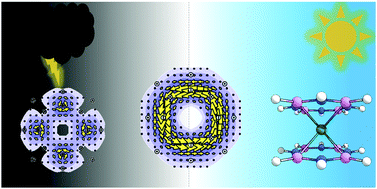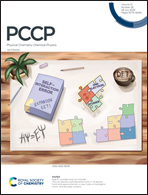Modelling aromatisation of (BN)nH2n azabora-annulenes†
Abstract
Despite a long tradition of descriptions of borazine as an ‘inorganic benzene’, this molecule is a non-aromatic species according to the magnetic (ring-current) criterion. Borazine, borazocine, and the larger neutral (BN)nH2n azabora-annulene heterocycles in planar conformations, although π-isoelectronic with [2n]annulenes, support only localized induced currents in perpendicular magnetic fields. The π-current maps of these systems comprise superpositions of separate ‘lone-pair’ circulations on all nitrogen centres. For the systems with n > 4, planarity must be enforced by a constraint. Qualitative orbital analysis based on the ipsocentric approach to calculation of induced current density suggests that global induced currents could be produced through strategic changes to the π electron count. In ab initio calculations, azabora-annulenes with rings of size [8]- and larger were indeed found to support global diatropic ring currents in both anionic and cationic forms with (4N + 2) π electron counts. The planar conformation of the charged ring typically occupies a stationary point of higher order on the potential energy surface, rather than a minimum. However, the borazocine dianion, [B4N4H8]2−, occupies a planar minimum, supports a diatropic ring current of strength comparable to that in benzene, and is predicted to participate in sandwich compounds; it is therefore a good candidate for an aromatised azabora-annulene.

- This article is part of the themed collection: 2020 PCCP HOT Articles


 Please wait while we load your content...
Please wait while we load your content...